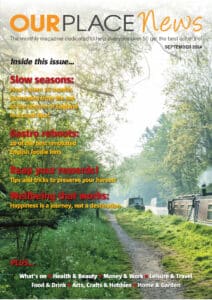Exercise
Be sure to see our Diabetes Self help list to learn more about exercise. You may feel too weak or tired be overly enthusiastic about a programme of exercise. Don’t be. It really is important, as you’ll learn from the organisations in our list. It’s can also be much easier, more pleasant and more life-changing enjoyable than you believed possible. The right choice of exercise can make you feel a great deal less weak and tired, lift your spirits and energy, and help deal with negative emotion as well as improving your condition.
The most pleasant exercise is usually the best. Many people find that walking is ideal if the feet are up to it, but any physical activity can help. Check your choice of exercise with the experts, but this is one condition where your range of exercise possibilities is very wide. If you want to do it, chances are you can.
The Cochrane Reviews tell us that exercise for type 2 diabetes improves blood sugar control and decreases body fat content. They found that exercise improves blood sugar control and that this effect is evident even without weight loss. Furthermore, exercise decreases body fat content, thus the failure to lose weight with exercise programmes is probably explained by the conversion of fat to muscle. Exercise improved the body’s reaction to insulin and decreased blood lipids. No adverse effects with exercise were reported.
High blood glucose can make you feel tired and sluggish, so you don’t exercise. Want to feel better? Exercise. The American Diabetes Association highly recommends walking, and the use of a pedometer because: Walking is inexpensive, easy, and convenient. It’s a good way to get the recommended level of physical activity of 30 minutes 5 days a week. Inactive people take an average of 2,000 to 4,000 steps per day. Moderately active people take 5,000 to 7,000 steps per day. Active people take at least 10,000 steps per day. People who have diabetes are more likely to be inactive than other people.
Studies have shown that a walking program can increase your insulin sensitivity for up to 72 hours, lowering blood glucose and giving you more energy. Pedometers can help you count (and increase) the number of steps you take each day. You can buy an inexpensive pedometer in most stores selling sport equipment. Slightly more expensive pedometers measure distance as well. You can estimate the distance from your number of steps. Walking 2,000 steps is about one mile. Awareness of the number of steps helps you think of creative ways to take more. You can even purchase a “talking” pedometer to boost your motivation while you walk.
If there are physical reasons why you can’t walk for exercise, there are many other equally good options including gardening, housework, swimming or a standing in the swimming pool workout (look for aqua aerobics, tai chi or dance in water), a gym or home fitness programme, Pilates etc. See our Health Information we Trust list and Complementary Techniques and Therapies guide.
Complementary Therapies / Alternative Medicine
Reuters reports that older people who are depressed are more likely to develop type 2 diabetes than those who are not. A major study in the Archives of Internal Medicine said that people with a high number of symptoms of depression were about 60 percent more likely to develop type 2 diabetes than people who are not depressed. Strange but true.
There could be any number of reasons for this finding, including less healthy lifestyles when one is depressed and/or higher levels of stress hormones. In any case the connection to depression suggests that counselling / therapy and complementary health disciplines could be more helpful than we might have thought.
Exercise, peace of mind, feeling more empowered – these are all areas where alternative and complimentary approaches can excel. So long as you don’t neglect or work against the basics of controlling your condition, these approaches can be positive and even life-changing. If diabetes gets you into meditation, mind-body discovery, better physicality or any of the other possibilities in our Complementary Techniques and Therapies guide and Health Information we Trust list , it may turn out to have been a surprising power for good in your life. Please do yourself the favour of checking those resources and finding out.

